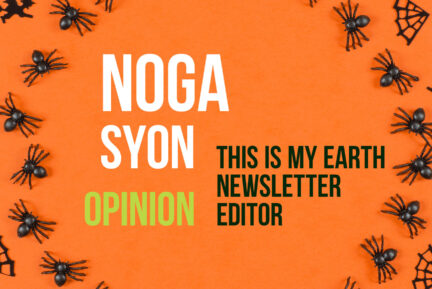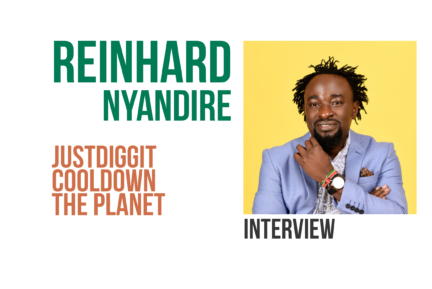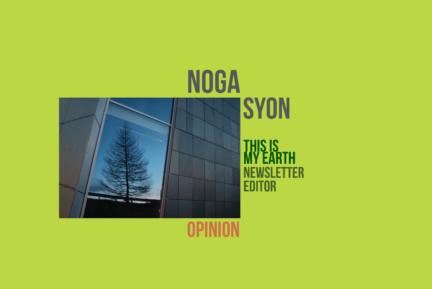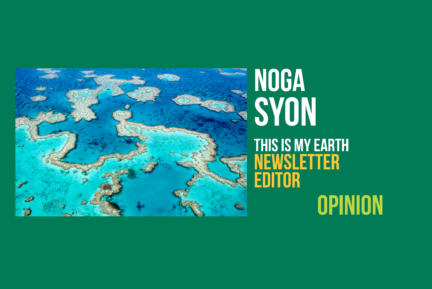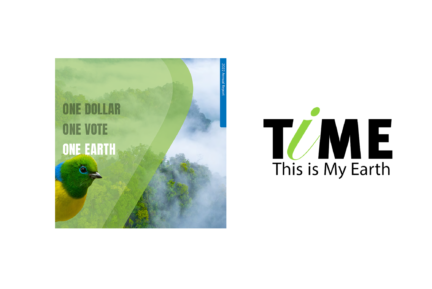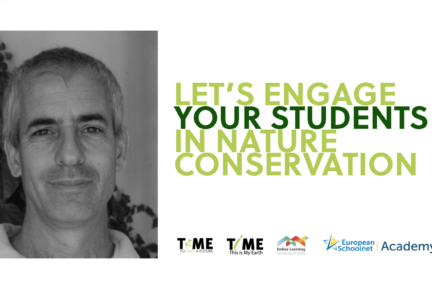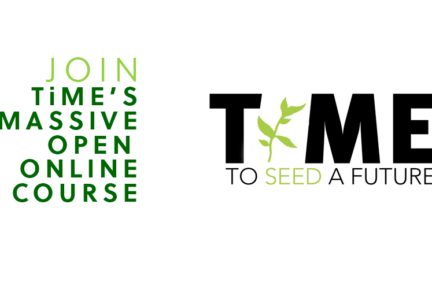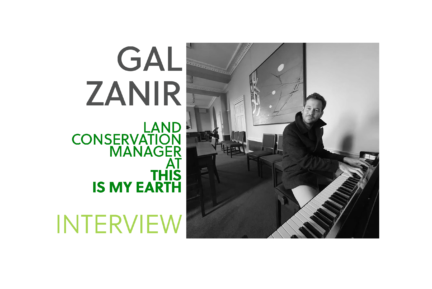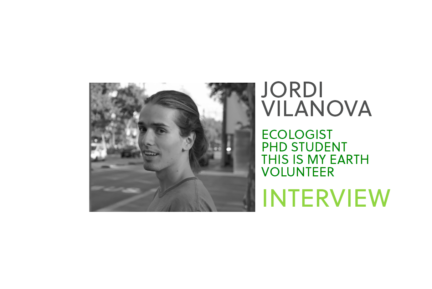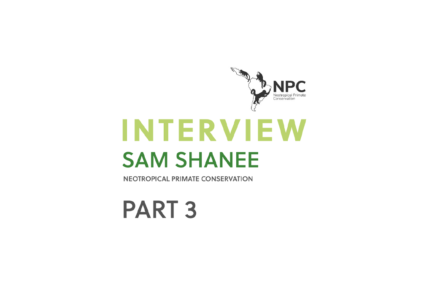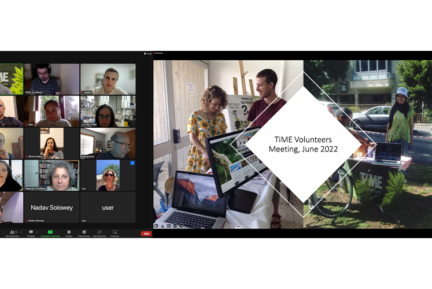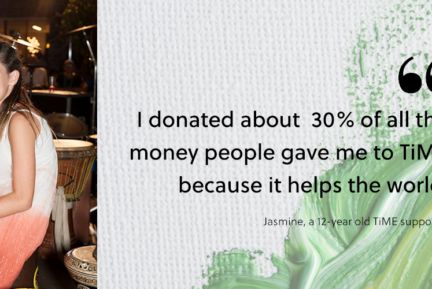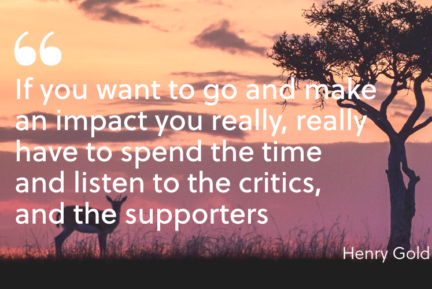We had the privilege to talk to Sarah Woods, Co-Founder and Co-Director of Ecology in Classrooms and Outdoors, about how they work to gain teachers’ trust.
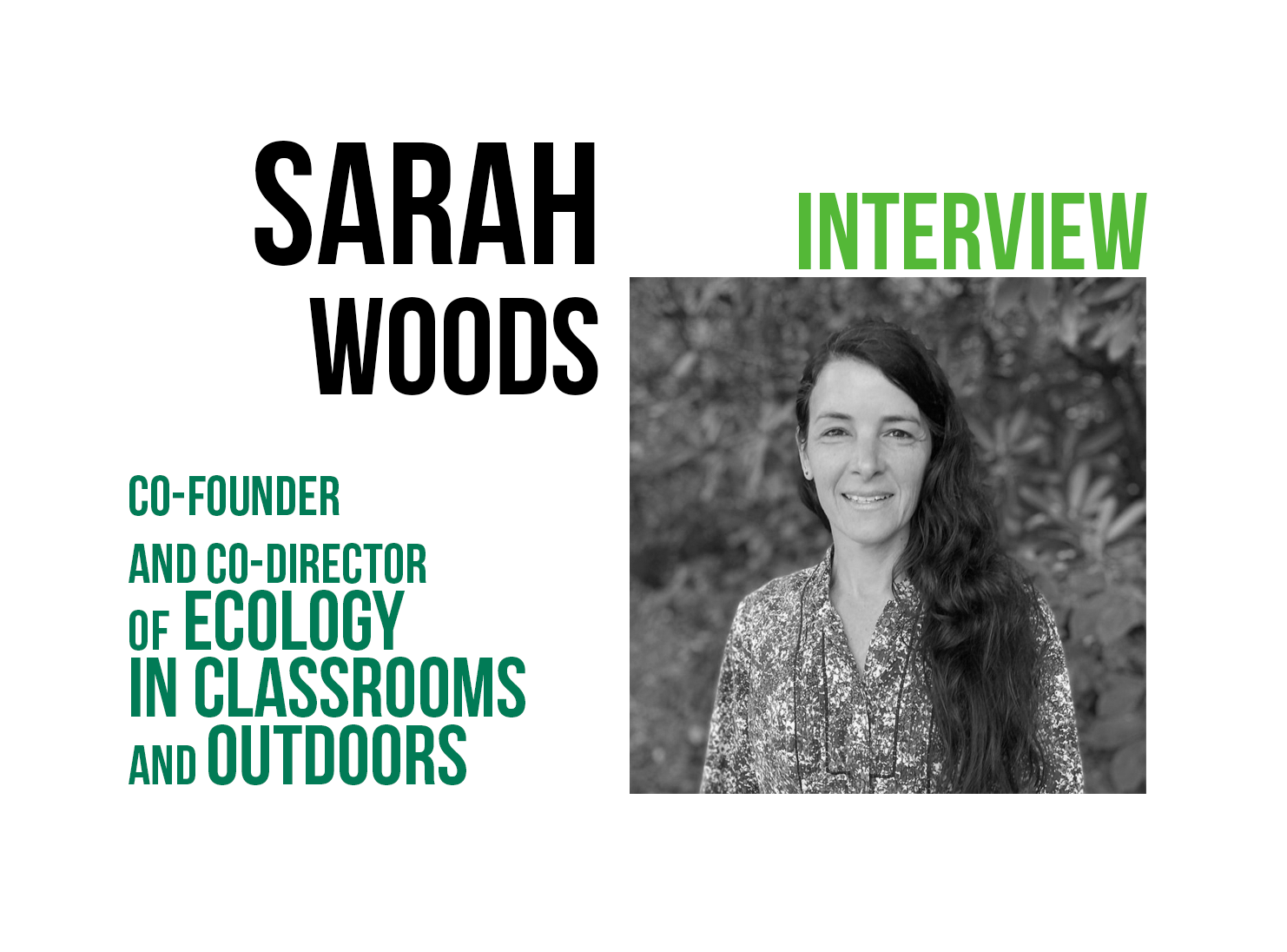
How would you introduce yourself?
I would introduce myself as Sarah Woods. I am the Co-Founder of Ecology in Classrooms & Outdoors and the current Co-Director.
Do you remember a moment of revelation in your life in which you felt that you needed to do something about nature?
Great question. I feel like that runs very deep into my childhood. I grew up in Maine, spending time exploring the woods around my neighborhood. And from a very young age, those woods are where I found my joy. It is where I found my peace. I would always escape to my little adventures in the woods.
I wanted to work in the environmental field. At the beginning of my career, I began doing environmental consulting. I was going to clean up all of the messes we’ve made. I started doing that, working at Superfund sites [highly contaminated areas], doing water testing and soil testing. I realized it was a little bit hopeless, in a sense, because we had damaged many places.
I asked myself how we could take a step back. How can we stop making all of these environmental disasters? So I went to grad school. I started an internship and began working with students.
I realized the solution was to inspire students to care for nature, and taking on this work brought me so much joy.
I’ve often said that nature is my church. That’s where I find myself. Motivating students to take action and care for the natural world around them was a logical step–and one I feel we all need.

That is so beautiful. What can you tell us about your organization?
Our organization has been around for almost 18 years, and it’s gone through an evolution. We began working with elementary students in a few schools, engaging students in schoolyard restoration and improving their school habitats. We later expanded and began habitat restoration with land managers and other partners at local natural areas.
In 2018, we joined forces with a program on the Oregon Coast. At the same time, we acquired a middle school and high school restoration nonprofit and an afterschool and summer camp program.
We moved those programs along when the pandemic happened and shut down our in-person programming.
We started to take the science lessons we had developed and taught over the last decade and a half and develop them into integrated units any educator could deliver. We then began work on our climate action program leading to our first open-sourced lessons, Climate Science and Action and This is My Earth: Biodiversity Conservation in Action.
ECO has resumed our in-person programming, and we will be focusing on middle school and elementary students moving forward. We feel we have the most impact by supporting elementary teachers, who are often generalists and don’t feel as comfortable teaching science.
As for high school science teachers, we will continue to support them through our Climate Action Education Programs. We often hear from high school teachers that they don’t have time to dive into the specifics of climate action or stay on top of new findings in climate science. ECO curriculum provides a way for them to teach climate literacy with confidence.
How do you manage to get donations and where’s the money coming from?
Oh, great question. Our primary funding comes from ongoing relationships with government agencies and local foundations. We do have individual contributions and some grants from family foundations. Three-quarters of our income comes from grants, which is challenging, to say the least.
I’m excited to share that we received two national awards this year. The Honda USA Foundation award will support our Southeast Portland elementary school program.
The other is a National Fish and Wildlife Foundation grant to support the habitat restoration and enhancement work with our middle school students.
To help diversify our revenue sources, we are currently working on a fee-for-service model and plan to sell our curriculum to community partners such as Watershed Councils and Soil and Water Conservation Districts.
You were mentioning the climate action curriculum for middle- and high-school students. How is it going?
During the pandemic, we scaled back our middle and high school programming, which relied heavily on habitat restoration funding. As a result, our current in-person middle and high school programming focuses on a few school partners while we work to expand our Climate Action Education Program.
Since coming out of the pandemic, it’s been challenging to re-engage with middle- and high-school teachers. They always have more to do and not enough time.
We have worked to make it easy for them to incorporate climate literacy into their lesson plans by providing comprehensive teacher guides, presentations, and engaging hands-on activities.
teacheco.orgSo far, the feedback has been very positive. Teachers report they really enjoy the lessons and appreciate all the work that’s gone into them. We will soon share these resources online through the curriculum platform we will launch this fall, teacheco.org.
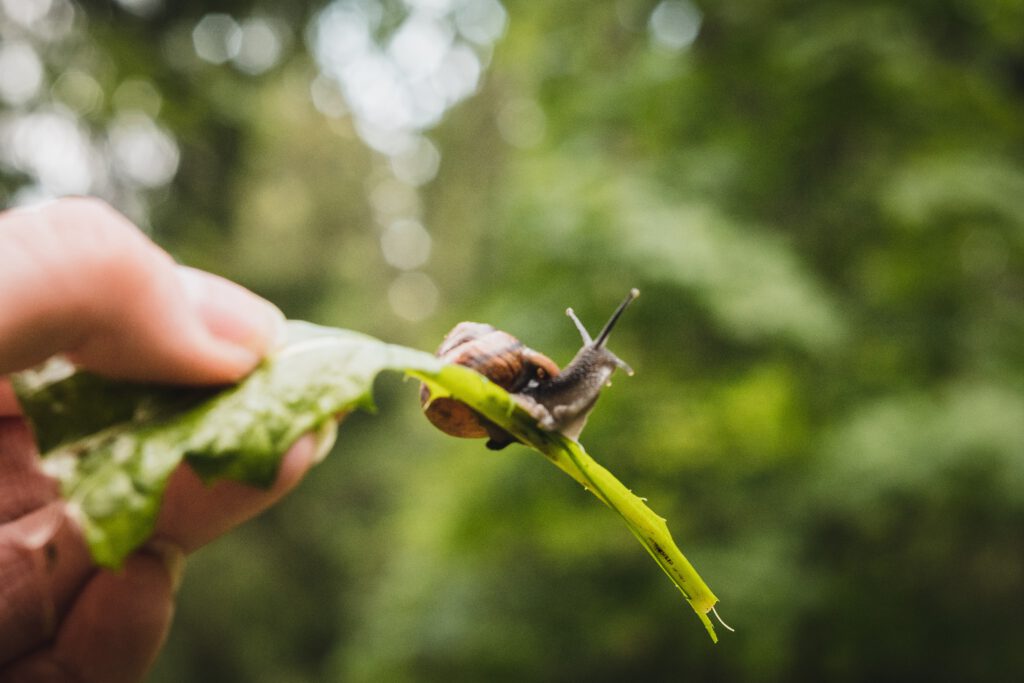
What sort of teachers or schools are more engaged?
It depends. It’s about relationships. Ongoing relationships with teachers create more engagement because they understand we provide valuable tools and bring something meaningful–they want us back!
The relationship must be rebuilt when a new teacher steps in. We work to gain their trust – to show them how we support and strengthen their work. It takes persistence and follow-through to start a line of communication. I think they get so many inquiries and requests from outside organizations it is easy to get overlooked. Often, they feel like it’s one more thing to do, another thing to answer to, another thing to follow up on. Once they realize the opportunity, they are enthusiastic.
You’ve got many awards, such as the 100 Best Nonprofits in Oregon. What does that mean to you?
Awards and recognition are nice, but I feel that making it through the pandemic is a bigger accomplishment. That feels like we should get an award!
During the pandemic, we received a $100,000 ninety-nine girlfriends impact award. It was a very competitive process, with only five awards given each year.
It was exciting to win! This gave us funding to make our ECO Adventure video series and provide remote programming when schools shut down.
Regarding the current situation in Oregon, how do you see the challenges you’re facing?
In Oregon, we are dealing with ongoing droughts and wildfires. However, these last several months there’s been excessive rainfall. It’s one extreme to the other, and nobody knows what’s going to happen next.
How does that affect our organization? Well, it was pretty alarming a few years ago with alerts for people around Oregon–and Portland specifically–to prepare for evacuation.
People’s homes and livelihoods are at risk. Our forests and habitats are at risk. That leads to trauma around climate change for students.
There is fear in my heart about what life will be like for our students. It makes ECO’s work even more critical. We give them the literacy and tools to respond – this gives them hope where there is uncertainty.
Connecting students with nature and climate action also empowers them to act in ways that benefit all life.
The IPCC released its final report on climate change a few weeks ago. As a teacher, it must be very frustrating. What can teachers expect from the guides you provide them with?
Within our Climate Action Education Program, there is a foundational lesson, Climate Science & Action, and a series of extension lessons designed to dive deeper into climate justice, biodiversity conservation, food & agriculture, and renewable energy. Each module includes a teacher guide with substantial background information, a lesson outline, a presentation with slide descriptions, and a hands-on activity.
For example, for one activity, we have created a card game called, The Climate Change Game. Students in a small group face a climate challenge. Each student has in their hand a series of potential actions to take. Students play what action they think will best address their particular challenge. It’s an opportunity for discussion. There are many action to take for each challenge and more than one solution.
How do you see This Is My Earth as an organization?
This is My Earth is a fantastic organization engaging in something that is very important. The ability of people to participate in the projects and decision-making is the most powerful opportunity to make a difference.
And I think, especially when we talk about climate change and how it impacts the world, conserving natural areas and biodiversity hotspots are essential components in this giant puzzle we’re all facing.
TiME’s democratic process, where everyone gets one vote, means so much to students! Especially as we’re trying to break down the power dynamics in the world.
When students have an opportunity to make real change, it gives them the hope to keep moving forward and perhaps pursue careers in the fields of nature conservation, science, and activism.
What can you tell us about the Introduction to Land program?
We are excited about this project. The program was developed with The Wetlands Conservancy and Wisdom of the Elders, our partners of many years.
ECO‘s mission ties into creating a connection with the land and inspiring students to be curious and explore the world around them. As a land manager, The Wetlands Conservancy provides the expertise to support our habitat enhancement and restoration projects. Wisdom of the Elders brings indigenous wisdom to our students and begins each field trip with a land acknowledgment. Wisdom interns mentor elementary students during our native plantings.

What is land acknowledgment?
A land acknowledgment recognizes the Indigenous Peoples that call a place home and honors them as traditional stewards of the land. We want to develop ways teachers can incorporate land acknowledgment into their classrooms.
In our conversations with The Wetlands Conservancy and Wisdom of the Elders, we realized the first step was developing a personal connection to the land by recognizing the land as a living being. We began this work by developing a lesson with students introducing themselves to the land. When we say to students, “we’re all part of nature,” they don’t necessarily understand and often feel separate.
Students had a chance to meet the land, to see it as a living being they can be in a relationship with–which is a bit outside of what students are used to during the school day. Students found something they felt connected to, whether through touch, something seen, or even smelled.
This activity encourages students to build a relationship with nature. It is the connection with nature that I experienced as a child that inspired me to create ECO.

